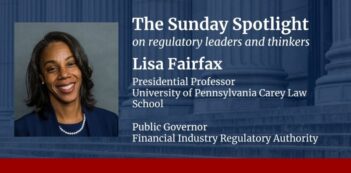
Scholars assess what it will take to support sustainability within the global fashion industry.
Every year, the fashion sector emits 1.2 billion tons of greenhouse gases.
Fast fashion, which is a common business model for modern fashion retailers, emphasizes quick turnaround times for clothing manufacturing, low production costs, and high-volume outputs to keep up with current trends.
In a recent article, Meital Peleg Mizrachi and Alon Tal of Tel Aviv University call for regulatory action to achieve a more sustainable fashion industry. Mizrachi and Tal encourage policy changes to reshape fashion companies’ production schemes and economic business models.
Mizrachi and Tal describe a model for a more sustainable approach to fashion known as the circular economy. At its essence, a circular economy designs products in such a way that “supports sustainable development, social justice, and economic wellbeing.” This model promotes sustainability and equity by cutting down on waste and producing items that prioritize longevity of use and potential for reuse.
Mizrachi and Tal contrast a sustainable fashion industry with the current industry emphasis on fast fashion.
According to Mizrachi and Tal, critics of the industry express concern with brands’ use of sustainability in their marketing materials. Often, companies that claim to be sustainable are frequently “all style and no substance,” explain Mizrachi and Tal, meaning they do not implement circular solutions into their business models.
To demonstrate how sustainable efforts could work, Mizrachi and Tal underscore a 2021 United Kingdom initiative that was headed by 17 top fashion companies called “Textiles 2030.” This initiative commits these companies, which make up half of the UK’s clothing sales, to lowering emissions of greenhouses gases by 50 percent and water usage by 30 percent. The Textiles 2010 initiative achieves these goals by incorporating “new approaches of circular economy into their business model by 2030.”
At its core, the Textiles 2030 initiative urges the industry to produce clothes that have the ability to be long-lasting and recyclable, providing a paradigm for putting the circular economic model into practice.
In seeking out the best alternatives to fast fashion, Mizrachi and Tal evaluate the feasibility of various policy interventions that would encourage sustainable fashion outcomes.
Mizrachi and Tal emphasize “pay-as-you-throw” community initiatives as a possible pathway to sustainable goals, in which residents have to pay a fee based on how much solid waste they dispose. According to Mizrachi and Tal, this program functions as a monetary incentive for individuals to accumulate less waste and would be highly effective for boosting sustainability.
Mizrachi and Tal also target the fashion industry’s use of outsourcing as a culprit for inhibiting sustainability. Because an overwhelming majority of clothing manufacturers outsource labor, Mizrachi and Tal propose holding corporations legally liable for working conditions. According to Mizrachi and Tal, this liability will both protect outsourced workers from subpar treatment and curtail environmental damage in the industry at large. Mizrachi and Tal acknowledge, however, that this alternative will likely garner political pushback.
Next, because Mizrachi and Tal argue that overconsumption contributes substantially to the unsustainable fashion predicament, they advocate educational solutions as an answer. They indicate that making consumers aware of the harmful environmental and social impacts of the fashion industry through programs such as collaborative community education can reduce harm. Mizrachi and Tal recognize, however, that this solution is long-term—the effects of educational initiatives will not be seen for years to come.
In addition, Mizrachi and Tal consider a carbon tax—imposed directly on fashion companies that emit greenhouse gases during production—as a potential way to curb environmental harms. Mizrachi and Tal bring to the fore a weakness of this solution: it will be very difficult to pinpoint where emissions are happening in companies’ production processes to be able to assess the taxes effectively.
As an alternative, Mizrachi and Tal suggest that governments impose higher taxes on fashion products that lack sustainable characteristics.
At the same time, Mizrachi and Tal argue, governments should actively provide support for sustainable fashion enterprises, including favorable loan terms for progressive firms.
Moreover, Mizrachi and Tal support a standardized certification program as a potential stop on the road to sustainable fashion. Mizrachi and Tal envision a system in which fashion companies would be ranked based on their performance across sustainable categories, such as environmental waste, emissions, and workers’ rights. According to Mizrachi and Tal, this kind of certification system would make it easier for consumers to shop in a sustainable manner. On the other hand, Mizrachi and Tal appreciate that differing definitions of “sustainable fashion” could make this solution controversial in creating the criteria for certification.
Regardless of the chosen approach to sustainability in the fashion industry, Mizrachi and Tal recommend consumers should remain at the core of regulatory decisions.



